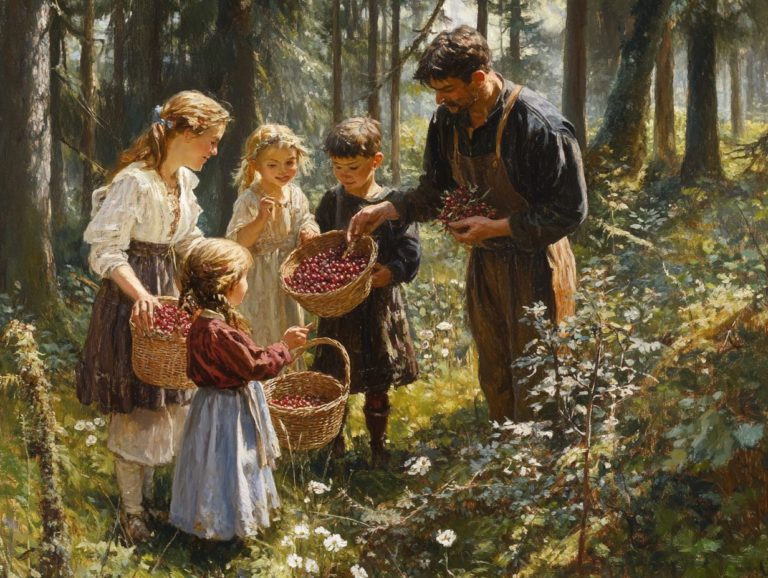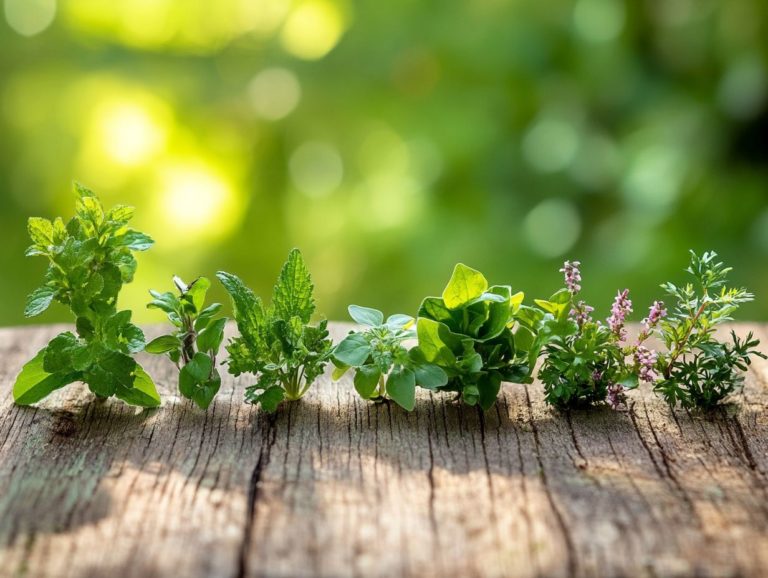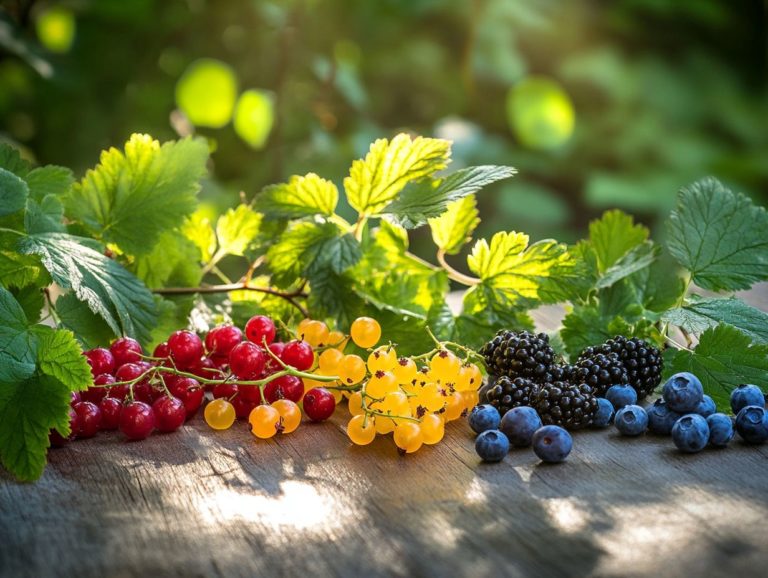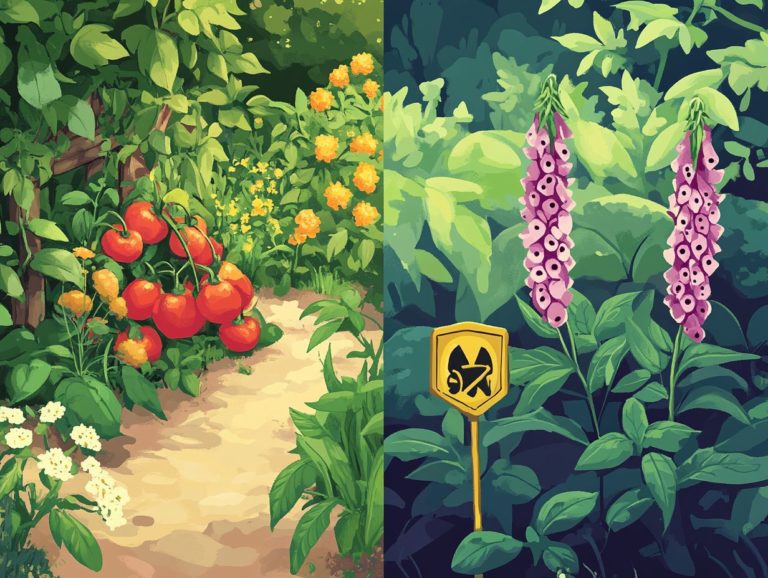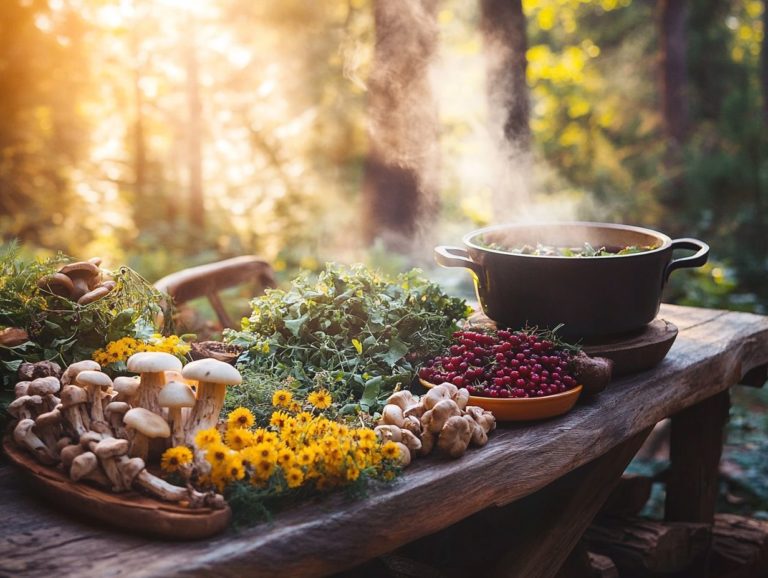Understanding the Importance of Wild Edibles
Wild edibles await just outside your door discover their hidden treasures now! These natural foods present a bounty of flavors, nutrients, and culinary possibilities.
This exploration delves into the numerous benefits of incorporating these foods into your diet, highlighting their impressive nutritional profiles and distinctive tastes.
Discover how to safely identify and harvest these plants, prepare exquisite recipes, and engage in sustainable foraging practices. Safety considerations will also be discussed to guarantee a worry-free foraging experience.
Join us in exploring the exciting world of wild edibles today!
Contents
Key Takeaways:
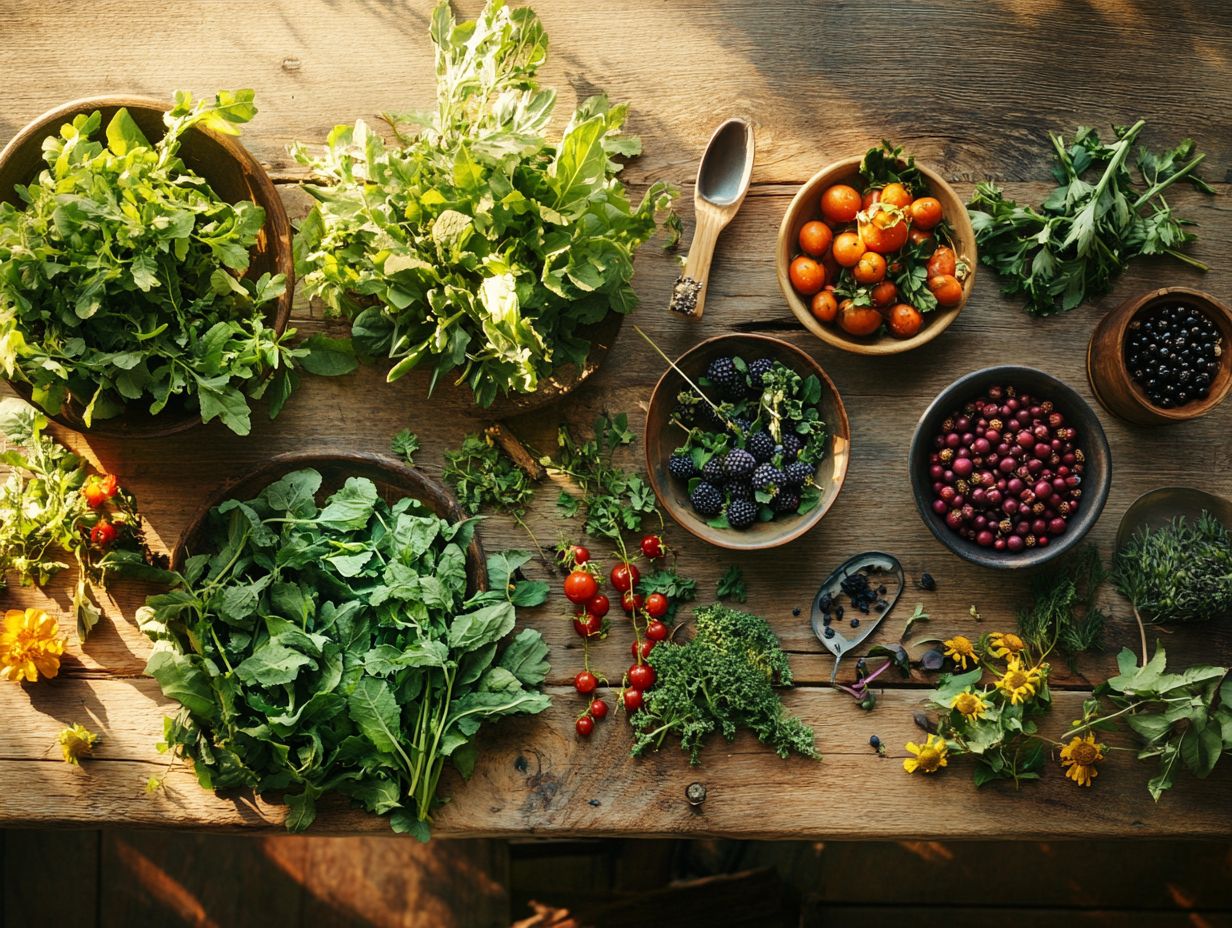
- Boost your health by adding wild edibles to your meals; they are packed with nutrients!
- Learn proper identification and safe harvesting techniques for foraging these plants.
- Prioritize safety and sustainability when collecting wild edibles.
What are Wild Edibles?
Wild edibles, often known as forageable foods, are nature s free-growing gifts, brimming with nutritional benefits that enhance a sustainable lifestyle diet. In urban settings like Syracuse, New York, foraging provides an opportunity to reconnect with traditional ecological knowledge, allowing you to tap into the rich biodiversity that surrounds you.
These wild food plants are not just nutrient-packed alternatives to produce found in stores; they also offer a valuable solution to food insecurity and food deserts that plague many communities.
Benefits of Incorporating Wild Edibles in Your Diet
Incorporating wild edibles into your meals presents a wealth of nutritional advantages, including enhanced antioxidant properties that can aid in the fight against chronic diseases like cancer and diabetes. These nutrient-dense foods often surpass their commercially available counterparts in vitamins and minerals, offering valuable sources of vitamin A, vitamin C, and riboflavin, which contribute significantly to your overall health and well-being.
Embracing these naturally growing plants boosts your food security and promotes sustainable food practices within your community.
Nutritional Value and Health Benefits
The nutritional value of wild plants presents a treasure trove of vitamins, particularly abundant sources of vitamin A and vitamin C, both essential for maintaining optimal health. These plants are also rich in natural chemicals found in plants, which are instrumental in neutralizing harmful free radicals in your body. By adding these wild edibles to your daily diet, you enhance your intake of vital nutrients while savoring the unique flavors they bring to your table.
Consider nettles and dandelions. Nettles are rich in iron and calcium, while dandelions pack antioxidants and vitamins that support vision and immune function.
Embracing these wild foods not only elevates your overall well-being but also fosters a sustainable connection with nature. By diving into the vibrant world of wild edibles, you can discover the health benefits of wild edibles while embarking on a delightful adventure for your taste buds.
Identifying and Harvesting Wild Edibles
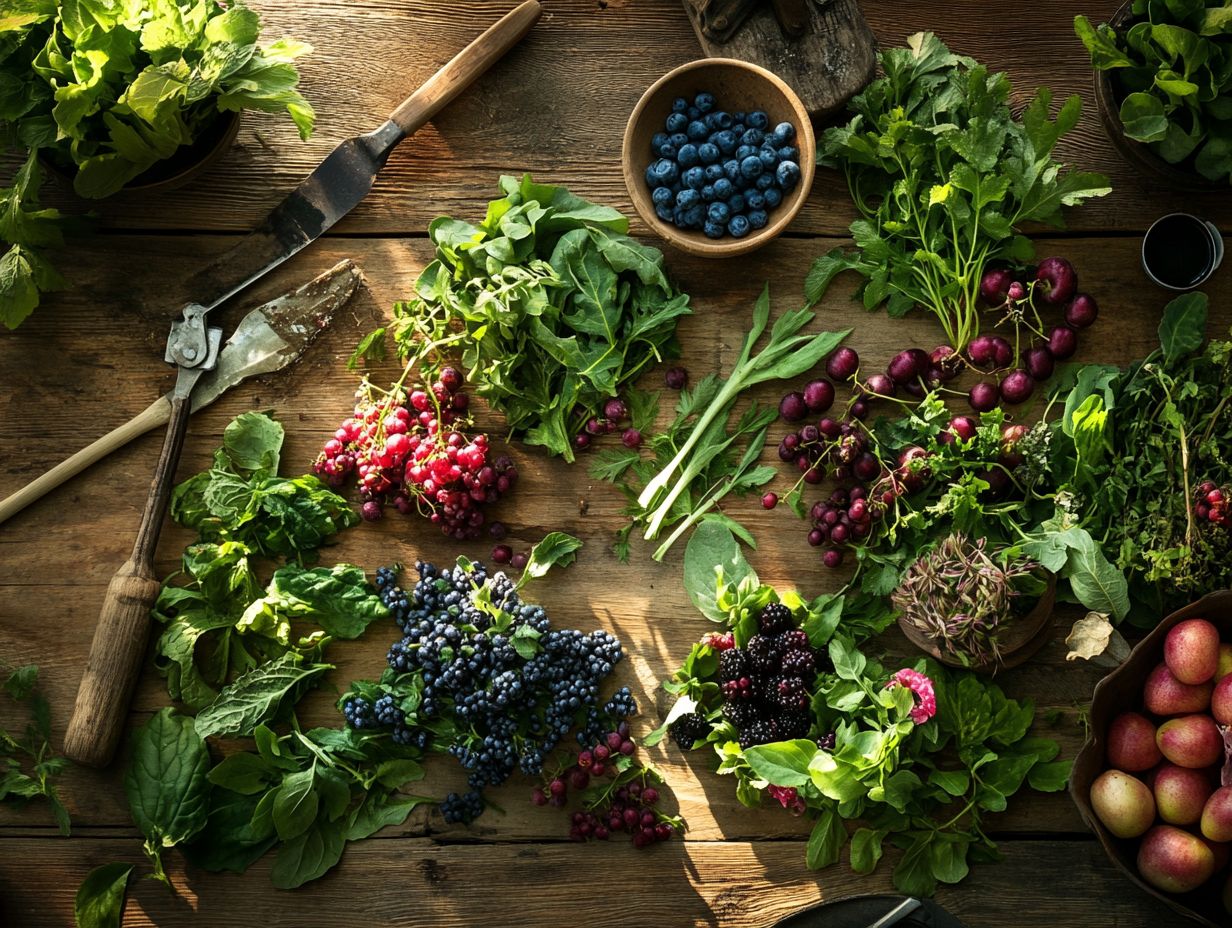
Identifying and harvesting wild edibles requires understanding local plants and seasonal changes to ensure safe foraging. By immersing yourself in the specific habitats and characteristics of diverse wild food plants, you can responsibly gather nutritious options that flourish within your local ecosystem, following the principles outlined in wild edibles: sustainable harvesting for future generations.
This practice enhances food security and cultivates a profound connection between you and the natural world, reinforcing the importance of preserving traditional ecological knowledge.
Tools and Techniques for Safe Foraging
Utilizing the right tools and techniques for foraging is essential for ensuring food safety and successfully harvesting wild edibles. Equip yourself with a reliable foraging guide, sturdy baskets for collection, and proper cutting tools.
This approach minimizes damage to the plants and the surrounding ecosystem. Tapping into community knowledge can provide invaluable insights into local species, their seasonal availability, and best practices for safe and responsible foraging.
These tools enhance your foraging experience and encourage sustainable practices that promote eco-adaptation. A quality foraging knife allows for precise harvesting, preventing over-trimming and helping to maintain healthy plant populations.
Opting for baskets made from natural materials helps you avoid plastic waste while allowing for air circulation, keeping your gathered edibles fresh. Employing collecting only what you need encourages you to take only what you truly need, leaving ample resources for wildlife and future growth.
By understanding these principles, you foster a deep respect for local habitats, ensuring that your foraging endeavors contribute to both personal enjoyment and ecological balance.
Preparing and Cooking Wild Edibles
Preparing and cooking with wild edibles unveils a realm of culinary possibilities! You are invited to explore an array of recipes that showcase the distinct flavors and nutritional benefits of these forageable treasures.
Whether you choose to integrate wild plants into traditional ethnic dishes or experiment with cooking methods like steaming or dehydrating for food preservation, wild edibles can elevate any meal.
By embracing these ingredients, you not only celebrate their cultural significance but also champion sustainable eating practices.
Recipes and Tips for Cooking with Wild Edibles
Creating delicious recipes with wild edibles requires you to understand their seasonality. Knowing when to forage is crucial for maximizing flavor and nutritional value.
For instance, incorporating seasonal wild greens into your salads or stews can enhance their nutrient-rich profiles and provide a unique twist to traditional dishes. Cooking techniques like blanching or saut ing help preserve the vibrant colors and textures of these wild plants.
Exploring the diverse array of wild herbs, mushrooms, and foraged fruits can ignite your creativity in the kitchen. Imagine preparing a spring pesto with freshly foraged ramps or wild garlic, blending them with nuts and olive oil to create a delightful spread.
In summer, consider experimenting with wild berries in desserts or smoothies, highlighting their natural sweetness while adding essential vitamins. Engaging with these extraordinary ingredients invites you to develop a deeper appreciation for seasonal eating and the culinary heritage tied to local ecosystems.
Safety Considerations
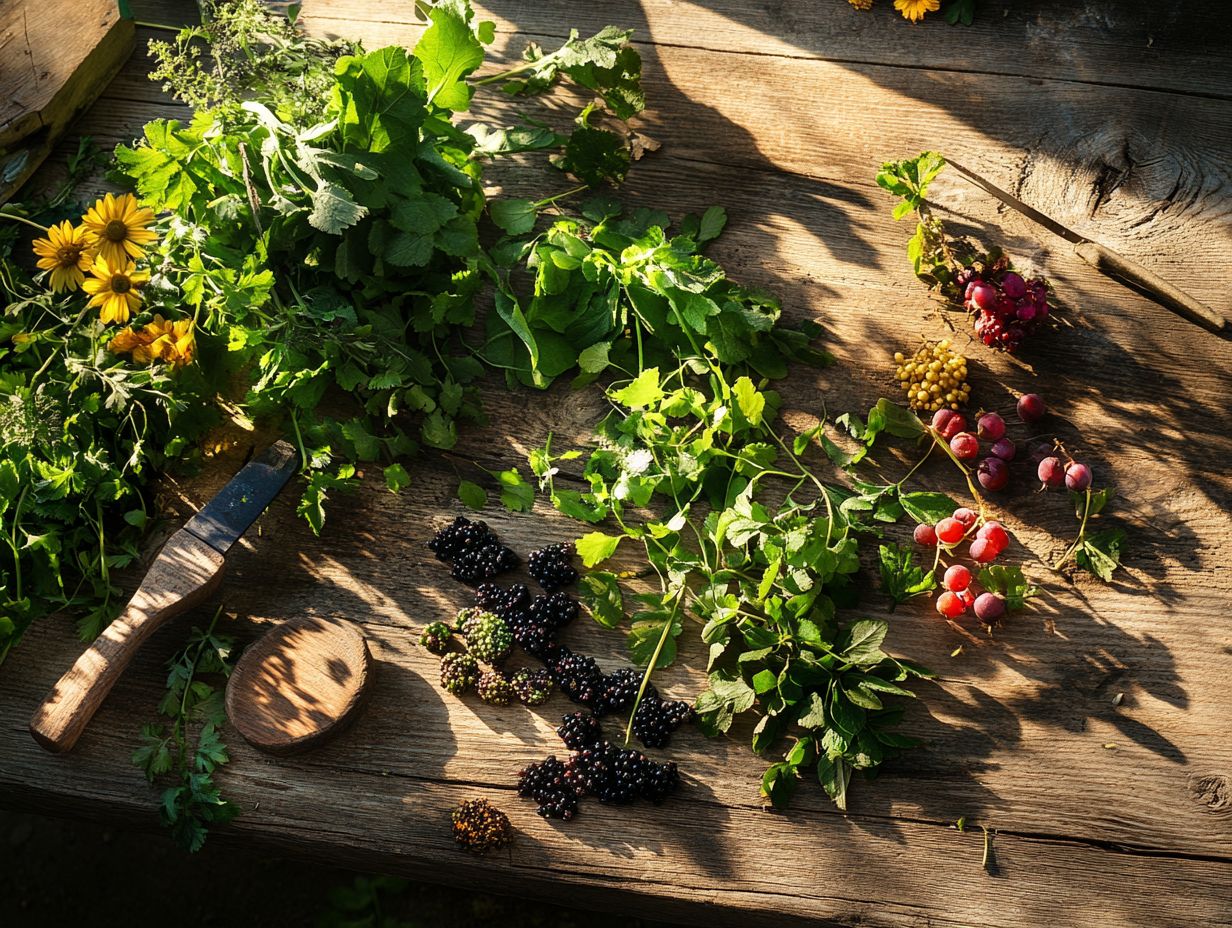
Safety considerations during your foraging adventures are essential. Improper identification and harvesting can lead to risks like food poisoning or allergic reactions.
It s vital to familiarize yourself with the differences between edible and toxic plants. Implementing precautions such as consulting trusted resources or experts in the field can greatly enhance your foraging experience.
By taking these steps, you can responsibly gather nutrient-dense foods while also addressing issues of food scarcity in your community.
Don’t miss the chance to discover the amazing flavors waiting for you in your backyard! Grab your basket and start exploring the wild edibles around you!
Potential Risks and Precautions
Understanding the potential risks associated with foraging for wild edibles is crucial for your food safety. Educate yourself about common toxic plants that might look like their edible counterparts. Seek expert guidance or consult comprehensive field guides before indulging in your finds.
By taking these necessary precautions, you can safely enjoy the numerous benefits that wild food plants offer.
Be especially cautious of plants such as poison ivy, deadly nightshade, and water hemlock. These can easily be mistaken for safe varieties. Food poisoning can hit hard with symptoms like nausea, vomiting, diarrhea, and severe abdominal pain. If you experience these, seek medical attention immediately!
Consult reputable sources like local foraging groups or botanical gardens for accurate information on plant identification and safety. Being diligent will guarantee a rewarding foraging adventure!
Sustainable Foraging Practices
Sustainable foraging practices are vital for preserving the variety of life in the ecosystem and ensuring that wild edibles remain accessible for future generations.
By employing responsible harvesting techniques like taking only what you need and leaving some plants to flourish you contribute to maintaining ecological balance and supporting healthy ecosystems.
Engaging with community knowledge can significantly enrich your foraging endeavors. This offers insights into sustainable practices that enhance both environmental health and local food security.
How to Harvest Responsibly
Responsible harvesting of wild food plants emphasizes sustainability and the health of local ecosystems. By following guidelines like harvesting only specific parts of a plant and timing your foraging to align with seasonal growth, you can help preserve biodiversity while enjoying the nutritional benefits these edibles offer.
Share insights with your community to strengthen local foraging practices and bolster food security initiatives.
Use practices like rotational harvesting and only take one-third of a plant population to help it thrive. Educating yourself about local flora and understanding their growth cycles is crucial for responsible foraging. Staying informed about endangered species is vital for protecting fragile ecosystems.
By embracing these responsible harvesting techniques, you not only safeguard your environment but also promote the longevity of wild food sources for future generations. Such sustainable actions can inspire a collective commitment to conservation that benefits both people and nature alike.
Frequently Asked Questions
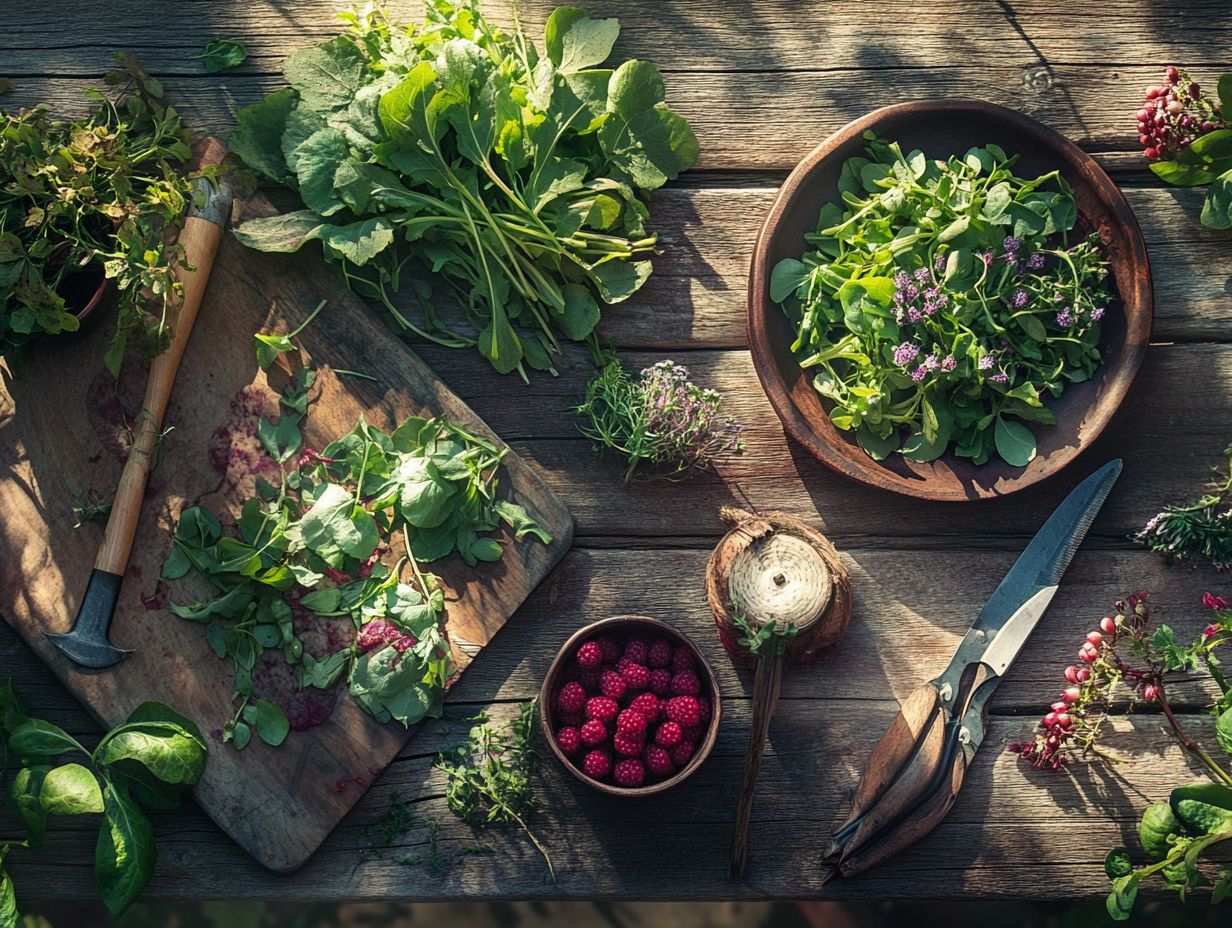
Curious about wild edibles? Let s explore what they are!
Wild edibles are plants that grow naturally in the wild and are safe for human consumption. They can include various types of plants, fruits, nuts, and mushrooms.
Why is it important to understand wild edibles?
Understanding wild edibles is important for several reasons. First, it allows proper identification of safe plants for consumption, avoiding potentially harmful ones. Second, it promotes sustainable foraging practices, ensuring that wild edible populations are not depleted. Third, it connects us to our natural environment and can provide a source of nourishment.
Are all wild edibles safe to eat?
No, not all wild edibles are safe to eat. It is important to properly identify and research any wild edible before consuming it. Some plants may look similar to edible plants but can be toxic. It is always best to err on the side of caution and only consume plants that have been properly identified.
What are some examples of commonly found wild edibles?
Commonly found wild edibles can include dandelion greens, blackberries, blueberries, wild strawberries, wild garlic, and various types of mushrooms such as morels and chanterelles.
How can I learn more about wild edibles?
Discover a variety of resources for learning about wild edibles! Field guides, online communities, and foraging classes are great places to start.
Always verify information from multiple sources to ensure accuracy.
Is foraging for wild edibles legal?
Foraging for wild edibles is legal in many areas. However, check local regulations before you start.
Some places may have restrictions, especially in protected nature zones.
Practice ethical foraging by only taking what you need. Leave enough behind so the plants can continue to grow and reproduce.

